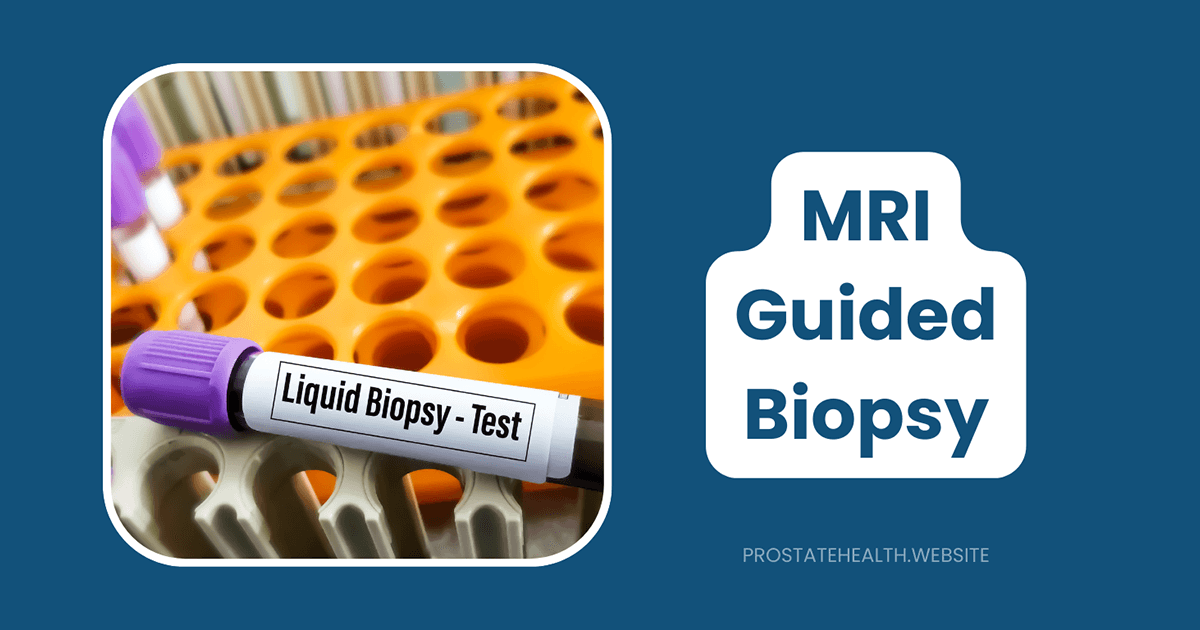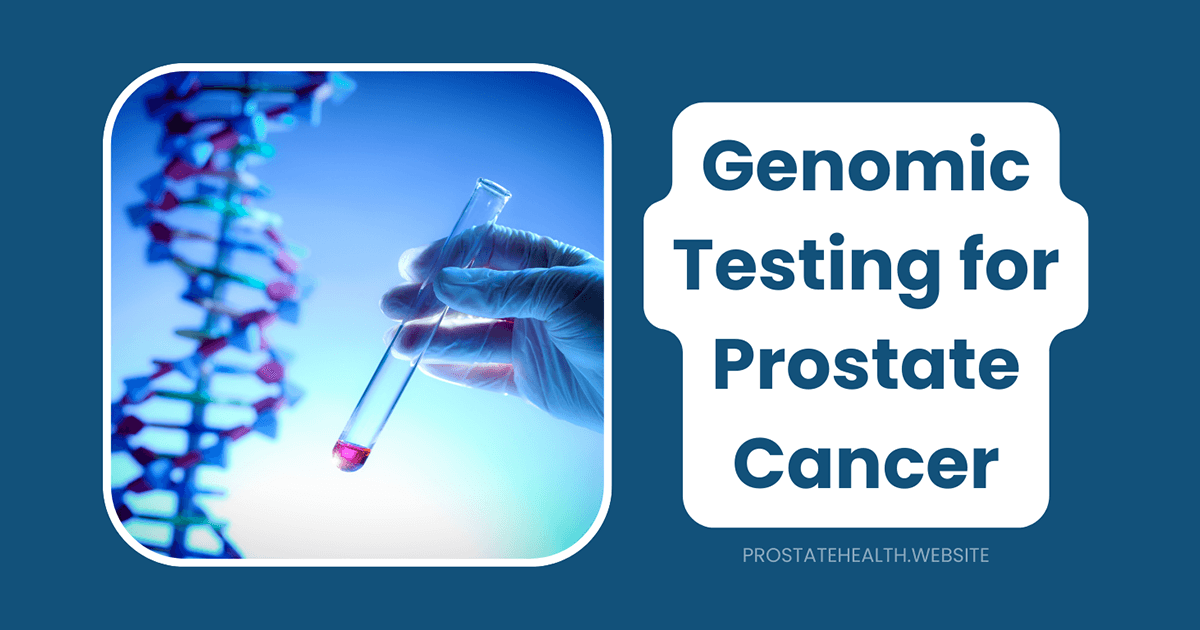Risk Assessment Tools: How Doctors Determine Your Prostate Cancer Risk

When it comes to prostate cancer, one size definitely doesn’t fit all. Some men have aggressive cancers that require immediate treatment, while others have slow-growing tumors that may never cause problems. This wide spectrum of disease behavior makes risk assessment crucial—both for men who haven’t been diagnosed yet and those making treatment decisions after diagnosis.
Gone are the days when doctors relied solely on PSA levels and digital rectal exams to make these assessments. Today’s urologists and oncologists have access to sophisticated risk assessment tools that combine multiple factors to provide a more personalized picture of your prostate cancer risk or prognosis.
As someone who’s guided hundreds of men through prostate cancer screening, diagnosis, and treatment decisions, I’ve seen firsthand how these tools can transform the decision-making process. Let’s explore the prostate risk assessment tools doctors use, how they work, and what they mean for your care.
Why Risk Assessment Matters
Before diving into specific tools, it’s important to understand why risk assessment is so crucial in prostate cancer:
For Men Without a Diagnosis
- Avoiding unnecessary biopsies: Only about 25% of men with elevated PSA who undergo biopsy actually have cancer
- Identifying high-risk individuals: Some men benefit from earlier or more intensive screening
- Personalizing screening approaches: Risk assessment helps determine how often screening should occur
For Men With a Diagnosis
- Guiding treatment decisions: Distinguishing between cancers that need immediate treatment and those that can be monitored
- Predicting outcomes: Estimating the likelihood of cancer recurrence after treatment
- Tailoring follow-up care: Determining the appropriate intensity of monitoring after treatment
As Robert, a 62-year-old patient, told me: “When my PSA came back elevated, I assumed I needed a biopsy right away. But my doctor used a risk calculator that showed my actual risk of aggressive cancer was quite low. We decided to repeat the PSA in six months instead, which saved me from an unnecessary procedure.”
Pre-Biopsy Risk Assessment Tools
These tools help determine whether a biopsy is necessary when PSA levels or other factors raise concerns.
PCPT Risk Calculator (Prostate Cancer Prevention Trial)
The PCPT Risk Calculator was one of the first widely adopted risk assessment tools, developed from data collected during the Prostate Cancer Prevention Trial.
What it includes:
- Age
- PSA level
- Digital rectal exam results
- Family history
- Prior biopsy results
- Race/ethnicity
How it works: The calculator provides two percentages: your risk of having any prostate cancer and your risk of having high-grade (more aggressive) cancer if you were to undergo a biopsy.
Strengths:
- Well-validated in multiple populations
- Simple to use
- Freely available online
- Provides separate estimates for any cancer vs. high-grade cancer
Limitations:
- Doesn’t incorporate newer biomarkers
- Based on six-core biopsies (modern biopsies typically take 12+ cores)
- May underestimate risk in some populations
ERSPC Risk Calculator (European Randomized Study of Screening for Prostate Cancer)
Developed from a large European screening study, this calculator offers more detailed risk assessment.
What it includes:
- Age
- PSA level
- Digital rectal exam results
- Prostate volume
- Prior biopsy results
- Family history
How it works: The calculator provides your risk of having any prostate cancer and high-grade cancer, along with a recommendation about whether a biopsy is indicated.
Strengths:
- Incorporates prostate volume, which improves accuracy
- Multiple versions available for different clinical scenarios
- Higher accuracy than PCPT in some studies
- Provides clear recommendations
Limitations:
- Less widely used in the United States
- Requires prostate volume measurement, which may not be available in all settings
4Kscore Test
The 4Kscore is a blood test that measures four prostate-specific kallikrein proteins to assess the risk of aggressive prostate cancer.
What it includes:
- Four kallikrein markers (total PSA, free PSA, intact PSA, and human kallikrein 2)
- Age
- Digital rectal exam results
- Prior biopsy history
How it works: The test provides a percentage risk of having Gleason 7 or higher prostate cancer if a biopsy were performed.
Strengths:
- High accuracy (AUC of 0.82 in validation studies)
- Can reduce unnecessary biopsies by 30-58%
- FDA-approved
- Specifically focuses on clinically significant cancer
Limitations:
- Relatively expensive (approximately $500)
- Not universally covered by insurance
- Requires specialized laboratory testing
Prostate Health Index (PHI)
PHI is a blood test that combines three forms of PSA to better assess prostate cancer risk.
What it includes:
- Total PSA
- Free PSA
- [-2]proPSA (a specific form of free PSA)
How it works: These three values are combined into a single score that indicates the likelihood of prostate cancer, particularly aggressive cancer.
Strengths:
- FDA-approved
- More specific than PSA alone
- Relatively affordable (approximately $80)
- Widely available
Limitations:
- Less accurate than some newer tests
- Doesn’t incorporate clinical factors like family history
- Performance varies across different PSA ranges
SelectMDx
SelectMDx is a urine-based test that measures the expression of specific genes associated with aggressive prostate cancer.
What it includes:
- Expression of HOXC6 and DLX1 genes
- PSA level
- PSA density
- Digital rectal exam results
- Age
- Family history
How it works: The test provides your risk of having any prostate cancer and high-grade cancer if a biopsy were performed.
Strengths:
- Non-invasive (urine sample)
- High accuracy (AUC of 0.86 for clinically significant cancer)
- Focuses specifically on aggressive cancer
- Incorporates both molecular and clinical factors
Limitations:
- Relatively new with fewer validation studies
- Not as widely available as some other tests
- Requires post-digital rectal exam urine sample
Imaging-Based Risk Assessment
Multiparametric MRI (mpMRI) has revolutionized prostate cancer risk assessment by allowing visualization of suspicious areas before a biopsy.
PI-RADS (Prostate Imaging-Reporting and Data System)
PI-RADS is a standardized scoring system for interpreting prostate MRIs.
What it includes:
- T2-weighted imaging
- Diffusion-weighted imaging
- Dynamic contrast-enhanced imaging
How it works: Radiologists assign a score from 1 to 5 to suspicious areas:
- PI-RADS 1: Very low risk (clinically significant cancer is highly unlikely)
- PI-RADS 2: Low risk (clinically significant cancer is unlikely)
- PI-RADS 3: Intermediate risk (clinically significant cancer is equivocal)
- PI-RADS 4: High risk (clinically significant cancer is likely)
- PI-RADS 5: Very high risk (clinically significant cancer is highly likely)
Strengths:
- Visualizes the entire prostate
- Can identify suspicious areas for targeted biopsy
- High sensitivity for clinically significant cancer
- Non-invasive
Limitations:
- Requires specialized equipment and expertise
- Interpretation can vary between radiologists
- Expensive and not universally available
- Some cancers may not be visible on MRI
As Michael, a 58-year-old patient, shared: “My PSA was borderline, and my doctor recommended an MRI before deciding on a biopsy. The MRI showed a PI-RADS 2 lesion, which has a low likelihood of being significant cancer. We decided to monitor with repeat PSA testing rather than proceeding directly to biopsy. It gave me peace of mind knowing we weren’t missing anything important.”
Post-Diagnosis Risk Assessment Tools
Once prostate cancer is diagnosed, different tools help determine how aggressive the cancer is and guide treatment decisions.
CAPRA Score (Cancer of the Prostate Risk Assessment)
Developed at the University of California, San Francisco, the CAPRA score is one of the most widely used risk assessment tools after diagnosis.
What it includes:
- PSA level
- Gleason score
- Clinical stage
- Percentage of positive biopsy cores
- Age at diagnosis
How it works: Points are assigned for each factor and totaled to create a score from 0 to 10:
- 0-2: Low risk
- 3-5: Intermediate risk
- 6-10: High risk
Strengths:
- Simple to calculate
- Well-validated in multiple populations
- Predicts multiple outcomes (recurrence, metastasis, mortality)
- Applicable to various treatment approaches
- Risk roughly doubles with every 2-point increase in score
Limitations:
- Doesn’t incorporate newer molecular markers
- May not capture all factors relevant to individual patients
- Requires percentage of positive cores, which isn’t always reported
CAPRA-S Score
The CAPRA-S is a modification of the CAPRA score for use after radical prostatectomy.
What it includes:
- Preoperative PSA
- Pathologic Gleason score
- Surgical margin status
- Extracapsular extension
- Seminal vesicle invasion
- Lymph node involvement
How it works: Points are assigned for each factor and totaled to create a score from 0 to 12, categorized as:
- 0-2: Low risk of recurrence
- 3-5: Intermediate risk
- 6+: High risk
Strengths:
- Highly accurate (c-index of 0.77)
- Predicts biochemical recurrence, metastasis, and mortality
- Well-validated in multiple studies
- Helps guide decisions about adjuvant therapy
Limitations:
- Only applicable after surgery
- Doesn’t incorporate newer molecular markers
- Requires detailed pathology information
Memorial Sloan Kettering Cancer Center (MSKCC) Nomograms
MSKCC has developed a series of nomograms for various stages of prostate cancer care.
What they include: Varies by nomogram, but may include:
- PSA level
- Gleason score
- Clinical or pathologic stage
- Number of positive/negative biopsy cores
- PSA velocity
- Treatment details
How they work: These online calculators provide personalized predictions for various outcomes, such as:
- Likelihood of organ-confined disease
- Probability of lymph node involvement
- Risk of biochemical recurrence after treatment
- Long-term survival probabilities
Strengths:
- Highly detailed predictions
- Multiple nomograms for different clinical scenarios
- Based on large patient databases
- Regularly updated
- Freely available online
Limitations:
- Complex to use
- Some require detailed information that may not be available
- May be overwhelming for some patients
Genomic Testing for Risk Assessment
Genomic tests analyze the activity of various genes in prostate cancer cells to provide insights into how aggressive the cancer is likely to be.
Decipher Prostate
Decipher analyzes the activity of 22 genes to predict the risk of metastasis after prostatectomy.
What it includes:
- Expression patterns of 22 genes involved in multiple biological pathways
- Can be performed on biopsy or prostatectomy specimens
How it works: The test provides a score from 0 to 1, with higher scores indicating greater risk of metastasis and prostate cancer-specific mortality.
Strengths:
- Highly accurate (AUC of 0.82-0.85)
- Provides information beyond clinical factors
- Can guide decisions about adjuvant therapy
- Covered by Medicare and many insurance plans
Limitations:
- Expensive
- Requires tissue sample
- Most validation studies are in post-prostatectomy setting
Prolaris
Prolaris measures the activity of 31 genes related to cell cycle progression to predict prostate cancer aggressiveness.
What it includes:
- Expression of 31 cell cycle progression genes
- Can be performed on biopsy or prostatectomy specimens
How it works: The test provides a Cell Cycle Progression (CCP) score that indicates how fast the cancer cells are dividing, along with a risk assessment for disease progression and mortality.
Strengths:
- Well-validated in multiple studies
- Can guide decisions between active surveillance and definitive treatment
- Particularly useful for intermediate-risk disease
- Covered by Medicare and many insurance plans
Limitations:
- Expensive
- Requires tissue sample
- Interpretation can be complex
Oncotype DX Genomic Prostate Score (GPS)
The Oncotype DX GPS analyzes the activity of 17 genes to predict the aggressiveness of prostate cancer.
What it includes:
- Expression of 17 genes involved in four biological pathways
- Performed on biopsy specimens
How it works: The test provides a Genomic Prostate Score from 0 to 100, with higher scores indicating greater risk of adverse pathology at surgery and metastasis.
Strengths:
- Validated in multiple studies
- Helps distinguish between favorable and unfavorable intermediate-risk disease
- Can guide decisions between active surveillance and definitive treatment
- Covered by Medicare and many insurance plans
Limitations:
- Expensive
- Requires tissue sample
- Most validation studies in low to intermediate-risk disease
As James, a 65-year-old with newly diagnosed Gleason 3+4 prostate cancer, told me: “I was on the fence about active surveillance versus surgery. My Prolaris test showed my cancer was growing very slowly, which gave me the confidence to choose active surveillance. Three years later, my cancer remains stable, and I’ve avoided the side effects of treatment.”
Integrating Multiple Risk Factors
Modern risk assessment often combines multiple approaches for a more comprehensive evaluation.
Stockholm-3 Model (STHLM3)
The STHLM3 model combines traditional clinical factors with blood biomarkers and genetic markers.
What it includes:
- PSA and PSA-related proteins
- Genetic markers (single nucleotide polymorphisms)
- Clinical variables (age, family history, previous biopsy)
- Digital rectal exam findings
How it works: The model provides a risk score that indicates the likelihood of having clinically significant prostate cancer.
Strengths:
- Higher accuracy than PSA alone (AUC of 0.74 vs. 0.56)
- Can reduce unnecessary biopsies by up to 32%
- Incorporates genetic risk factors
- Focuses on clinically significant cancer
Limitations:
- Not widely available in the United States
- Complex model requiring specialized testing
- Limited validation outside of Scandinavian populations
ClarityDX Prostate
ClarityDX Prostate is a newer risk assessment tool that combines clinical features and blood-based biomarkers.
What it includes:
- Clinical factors
- Multiple blood-based biomarkers
How it works: The test provides a risk score for clinically significant prostate cancer to guide biopsy decisions.
Strengths:
- High sensitivity (95%) and reasonable specificity (35%)
- Could potentially avoid up to 35% of unnecessary biopsies
- Outperforms PSA alone and some other risk calculators
- Complements MRI findings
Limitations:
- Relatively new with limited validation
- Not yet widely available
- Limited long-term outcome data
How Doctors Use These Tools in Practice
In real-world practice, doctors typically use these tools in a stepwise fashion:
For Men Without a Diagnosis:
- Initial screening: PSA and digital rectal exam
- Basic risk assessment: PCPT or ERSPC calculator to determine biopsy need
- Advanced biomarkers: For borderline cases, tests like 4Kscore or PHI
- Imaging: MRI with PI-RADS scoring before biopsy
- Biopsy decision: Integrating all available information
For Men With a Diagnosis:
- Initial risk stratification: CAPRA score or NCCN risk groups
- Genomic testing: For men in the gray zone between active surveillance and treatment
- Treatment planning: Using nomograms to predict outcomes with different approaches
- Post-treatment assessment: CAPRA-S or other tools to guide adjuvant therapy decisions
- Ongoing monitoring: PSA kinetics and other markers to detect recurrence
Special Considerations for High-Risk Populations
Risk assessment is particularly important for men at higher risk of aggressive prostate cancer:
African American Men
African American men face a 60% higher incidence of prostate cancer and twice the mortality rate compared to white men. Risk assessment considerations include:
- Earlier screening (starting at age 40-45)
- Lower thresholds for additional testing
- Potential limitations of some risk calculators developed in predominantly white populations
- Possible benefit from genomic testing even with seemingly low-risk disease
Recent research presented at the 2025 American Urological Association meeting found that when African American men with low or favorable intermediate-risk prostate cancer underwent genomic testing:
- 63.5% had a change in their risk designation
- Over 60% were reclassified to a higher risk category
- Among those with favorable intermediate-risk disease, 65% were upstaged after genomic testing
Men with Family History
Men with a family history of prostate cancer have special considerations:
- Earlier screening (typically 5-10 years before the age at which the youngest affected relative was diagnosed)
- Lower thresholds for biopsy
- Consideration of genetic testing for inherited cancer syndromes
- Potentially more aggressive management of seemingly low-risk disease
Men with Genetic Mutations
Men with certain genetic mutations (BRCA1/2, HOXB13, Lynch syndrome genes) have significantly higher risks of aggressive prostate cancer:
- Earlier and more intensive screening
- Lower thresholds for biopsy
- More caution with active surveillance
- Consideration of prophylactic measures in some cases
Making Sense of Your Risk Assessment Results
If you’ve undergone risk assessment for prostate cancer, here are some tips for understanding your results:
Ask the Right Questions
- What is my absolute risk of having prostate cancer (or aggressive prostate cancer)?
- How does my risk compare to other men my age?
- What factors are contributing most to my risk assessment?
- What additional tests might help clarify my risk?
- How might my risk change over time if we decide to monitor rather than proceed to biopsy or treatment?
Understand the Limitations
No risk assessment tool is perfect. Consider:
- The tool’s validation in men similar to you (age, race, etc.)
- The range of uncertainty in the risk estimate
- Factors that might not be captured by the tool
- How the tool’s predictions align with your personal values and preferences
Consider Multiple Perspectives
The most reliable risk assessment often comes from integrating multiple tools:
- Clinical risk calculators
- Biomarker tests
- Imaging findings
- Genomic testing (if applicable)
As Thomas, a 70-year-old patient, shared: “My PSA was rising, but the risk calculator showed my risk of aggressive cancer was still relatively low. To be sure, we did a 4Kscore test, which confirmed the low risk. The combination of these assessments gave me confidence to continue monitoring rather than rushing to biopsy.”
The Future of Prostate Cancer Risk Assessment
Risk assessment tools continue to evolve rapidly. Emerging approaches include:
Artificial Intelligence
Machine learning algorithms are being developed to integrate multiple risk factors and identify patterns that human clinicians might miss.
Liquid Biopsies
Blood tests that detect circulating tumor DNA and other cancer biomarkers may eventually provide non-invasive alternatives to tissue-based testing.
Integrated Risk Models
Future tools will likely combine clinical factors, imaging findings, genomic data, and other biomarkers into comprehensive risk models.
Personalized Screening Protocols
Risk assessment will increasingly be used to tailor screening approaches to individual risk profiles, with higher-risk men receiving more intensive screening.
Conclusion: Knowledge Is Power
Prostate cancer risk assessment has come a long way from the days of PSA testing alone. Today’s sophisticated tools provide much more nuanced and personalized information to guide screening and treatment decisions.
By understanding how these tools work and what they can tell you, you can have more informed conversations with your healthcare providers and play a more active role in decisions about your prostate health.
Remember that risk assessment is not about creating anxiety but about empowering you with information. Whether you’re deciding about a biopsy, choosing between active surveillance and treatment, or determining the need for additional therapy after surgery, these tools can help you and your doctor make decisions that align with both the medical realities and your personal values.
Have you had experience with prostate cancer risk assessment tools? Share your story in the comments to help other men navigating this journey.






